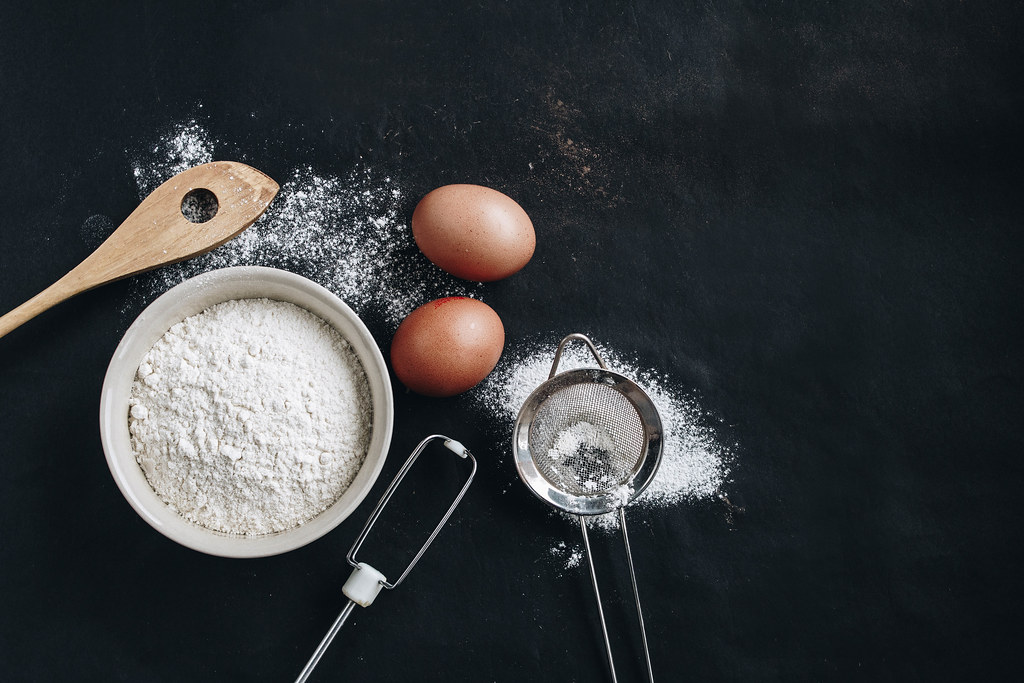My First Baking Test In North Carolina

We finally made it to North Carolina, and we’re temporarily staying in an RV park until we find our new home! We’ve met with our realtor and been qualifying for mortgages so now it’s just a matter of knowing when the right thing comes along!
There have definitely been many adjustments, but one thing I hadn’t really thought about is the elevation and humidity! Coming from Utah- where it’s super dry and we lived at almost 5,000 feet above sea level, it’s been a little different coming to a place that is only 125 feet above sea level and has been experiencing about 40-80% humidity. It’s quite the change!
While I’m dealing with frizzy curls and damp paper, I’m also questioning my baking! Do I need to change anything? I’m used to always adapting for high altitudes, and many of the bakers I follow are also in Utah, so I know their recipes work well in a dry, elevated climate. But will they work so well in a humid place at such a low elevation?
I put this to the test this week by baking my husband’s favorite cake, Cake by Courtney’s Blueberry Delight Cake. I planned on making it for his birthday, but with all our travel plans it just didn’t happen. So now I get to test it in humid, almost sea level North Carolina!
Now granted, I’m still baking in an RV oven, so that definitely affects the whole baking process, but overall, it was a success! I watched it really closely, wondering if things would bake faster. I checked it 5 minutes before the baking time and it was definitely not done (there was quite a bit of batter on the toothpick), but after that 5 minutes it was overdone! I should have checked it after 2 or 3 minutes I think ;).
I know that baking times can take longer in higher altitudes because of the lower air pressure, and so I wondered if my cake would take a shorter amount of time. I’d say it was actually pretty close, but I definitely want to check things on the lower end of the baking time in the future!
All this to say- if you’re cooking at a lower elevation- you’re just fine! The true adjustment comes if you’re moving to a higher altitude. You’ll need to bake longer, leaveners may need to be decreased (because the dough will actually rise faster), additional liquid may need to be added (because it evaporates faster), and don’t be surprised if your baked goods sink! In fact, I’m excited to re-try a few recipes that I’ve made in the past that have totally failed due to the high altitude!
All this to say- thank heavens I grew up in a high elevation state! I don’t have to adjust my family recipes, and I don’t have the same learning curve moving to a lower elevation than I would moving to a higher elevation!
 Camille Hoffmann
Camille Hoffmann
Weekly Newsletter Contributor since 2014
Email the author! camille@dvo.com
Sources:
- https://www.bettycrocker.com/how-to/tipslibrary/baking-tips/baking-cooking-high-altitudes#:~:text=At%20high%20altitudes%3A,too%20moist%2C%20dry%20or%20gummy.
- https://extension.colostate.edu/topic-areas/nutrition-food-safety-health/high-altitude-food-preparation-p41/
- https://www.epicurious.com/expert-advice/high-altitude-baking-tips-article#:~:text=About%20that%20cooking%20time%3A%20In,doesn't%20get%20as%20hot.
- https://www.flickr.com/photos/30478819@N08/25291626418
